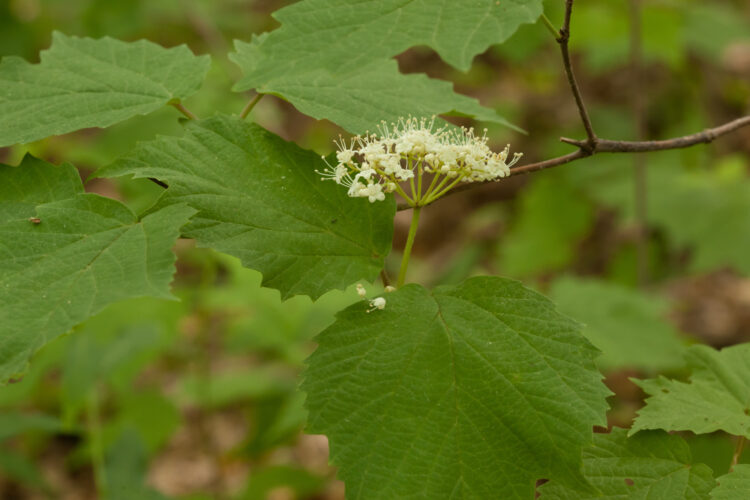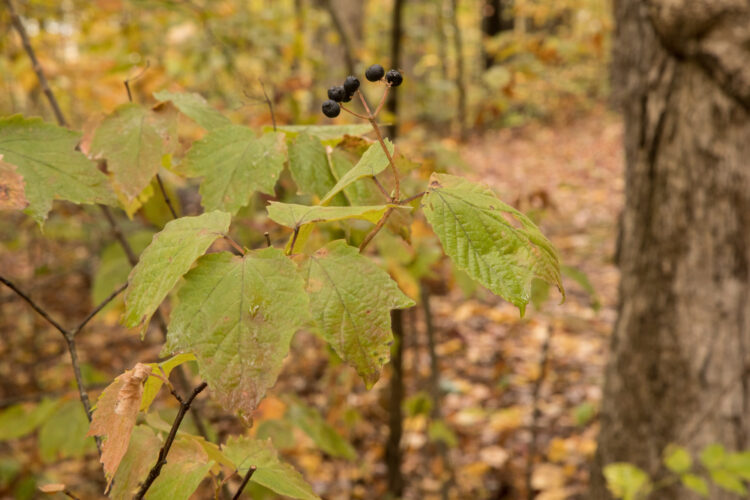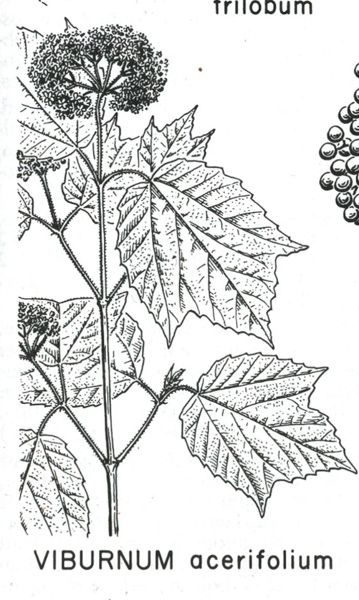maple-leaf viburnum
(Viburnum acerifolium)
Adoxaceae, the Moschatel family
How to recognize maple-leaf viburnum. As the name implies, this Viburnum is indeed very maple-like owing to its oppositely arranged, simple, palmately lobed, leaves. The leaves are, in most instances, uniformly short-hairy, although some forms have hairs restricted to the lower veins. The inflorescence is a nearly flat-topped branched arrangement (a compound cyme) with small white flowers that have 5 fused petals and an inferior ovary.

Maple-leaf viburnum in flower.
May 28, 2011, Franklin County Ohio
The fruits are dark purple-black drupes.

Maple-leaf viburnum in fruit.
October 8, 2017, Belmont County, Ohio.
Where to find maple-leaf viburnum. E. Lucy Braun, in The Woody Plants of Ohio (1961, 1989; The Ohio State University Press) tells us this is an “Erect shrub, 1-2 m. tall, of dry or moist but well-drained soil in woodlands; often with beech, but not confined to any forest type. Ranging through much of the deciduous Forest east of the Mississippi River. Widespread in Ohio, but less frequent in the western counties. Foliage turns carmine to purple in fall”.
Scanned Image from an Old Book
(Flora of West Virginia, by P.D. Strausbaugh and Earl L. Core)

maple-leaf viburnum
Ooh ooh. I have a question!
To what family does Viburnum belong, and what distinguishes it from the (also opposite-leaved) honeysuckles (fam. Caprifoliaceae)?
Viburnum is in the Adoxaceae, which differs from Caprifoliaceae by having small, radially symmetric flowers in branched clusters rather than large bilateral ones arranged in pairs.
